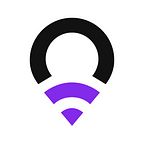Web1 vs. Web2 vs. Web3: An Overview of Internet Development
Web3 is the new internet buzzword getting all the attention. As the name implies, it’s the 3rd version of the Internet and obviously better than Web2.
Many experts consider Web3 to be a new internet revolution that is already well underway.
To understand Web3, let’s return to where it all started!
The Evolution of the Web
Web 1
The internet came into mainstream existence in the early 1990s with Web 1, which represents the most basic version of the web.
Back then, internet users could primarily explore the internet in a read-only fashion. The dynamic and interactive web we have today did not exist.
Users opened their browsers, entered a website name, and viewed the content. As long as you had an internet connection, you could access websites and make purchases on them. But if you had to create content or edit information, developers were needed.
The primary focus of Web1 was to deliver content for users to read, offering little in terms of interaction and engagement.
Web1 lasted until 2004. Then, Facebook arrived and brought with it the social media revolution — i.e., Web2.
Web2
Social media was the biggest revolution of this phase of internet development. Instead of letting people simply browse the web and read information, social media giants like Facebook, Twitter, and YouTube allowed user to create content and share it themselves.
Unlike with Web1, there weren’t any coding skills required to upload content on Web2. People could write posts, upload pictures and videos, send messages, uses tags, and much more. This era has improved our lives in many ways, but also led to problems like data breaches and the exploitation of sensitive personal information.
In Web2 we simply have no control over where our personal data is stored and who can access it. Hence, a lack of privacy and anonymity has created serious risks for current internet users.
Web3
Web3 uses blockchain technology to decentralize data storage and internet access while enabling cryptocurrency trading and purchasing.
This blockchain built web will fundamentally enhance the security of many human-machine interactions. Everything from making online transactions to sharing confidential information over the internet will become more secure and trusted.
This advancement will introduce new business models through decentralized autonomous organizations (DAOs) and self-sovereign data marketplaces.
Furthermore, the decentralization characteristic of Web3 lets individuals profit from building and using the internet. Users can already earn tokens from various play2earn projects in the world of GameFi, for example, and MetaBlox WiFi users can effortlessly earn future ROAM tokens by collecting mPoints. Crypto tokens can easily be exchanged for fiat currencies.
A major difference with Web3 is if a platform grows and succeeds, not just the owners but the users, contributors, and investors will win too.
Wait, Are There Any Drawbacks to Web3 ?
Identity plays a crucial role in the physical world. Let’s consider a few examples here: A passport defines a person’s citizenship. Similarly, licenses identify people who are eligible to drive.
Since Web3 is still in its infancy, there are several challenges that have to be solved during its implementation. Here are some common problems with Web3 as it exists today: –
- Plagiarized Identities
- Fake Banking Transactions
- Compromised keys
There is a lot of hype about Web3 and how it’s going to reshape the future of the internet, but we still need some practical solutions to overcome the issues.
Decentralized Identifiers — The Solution
A strong DID (Decentralized Identifier)-enabled network like MetaBlox can solve the above issues by using a 4-layer identification model that includes:
- Layer 1 — Identifiers and Standards
- Layer 2 — Infrastructure
- Layer 3 — Credentials
- Layer 4 — Apps & Wallets
As the next generation of the internet emerges, robust solutions like MetaBlox Network will enable Web3 to go mainstream. We are still in the early innings but the future is definitely bright.
Be sure to stay tuned with us on our website and social media channels–
